Imagine taking a mere $100 and growing it into a staggering $10,000 in just a few years. It may sound too good to be true, but financial experts have uncovered five proven strategies that can make this dream a reality. By embracing savvy investment techniques and a savings-focused mindset, anyone can embark on a transformative journey towards financial growth and wealth building.
According to renowned personal finance author Jaspreet Singh, these five powerful strategies include: saving your way to $100,000 through high-yield savings accounts, passively investing in the stock market, investing in your income potential, acquiring an active asset like a small business, and even taking a calculated risk with cryptocurrencies or other high-risk, high-reward investments. The key is to find the right balance of diversification and risk tolerance that aligns with your financial goals.
Whether your starting point is a mere $100 or a larger sum, these strategies can help you navigate the path to building a sustainable portfolio and unlocking long-term wealth. By mastering the art of small-capital investing, you’ll be well on your way to transforming your financial future.
Embracing a Savings-Focused Mindset
One of the safest ways to grow your money is through savings strategies. According to Federal Reserve statistics, the average American saves just under 5% of their income. Those who can save 10% of their income are able to put $7,100 into their high-yield savings accounts each year. With interest rates offering up to 4%, you could reach $100,000 in 10 years by saving $10,000 per year and earning 4% interest.
Adopting a savings-focused mindset is crucial for building long-term wealth. By prioritizing your savings and minimizing unnecessary expenses, you can accelerate your journey towards financial independence. Consider cutting back on discretionary spending, such as dining out, and instead allocate those funds towards your high-yield savings accounts. Additionally, tackling high-interest debts first can help you minimize interest payments and free up more money for savings and investments.
Embracing a lifestyle of voluntary simplicity can also be a powerful strategy. By focusing on experiences and relationships rather than material possessions, you can allocate a larger portion of your income towards savings and investments. Minimalist investment strategies, like index funds or passive investing, can maximize long-term returns with minimal effort, further enhancing your savings growth.
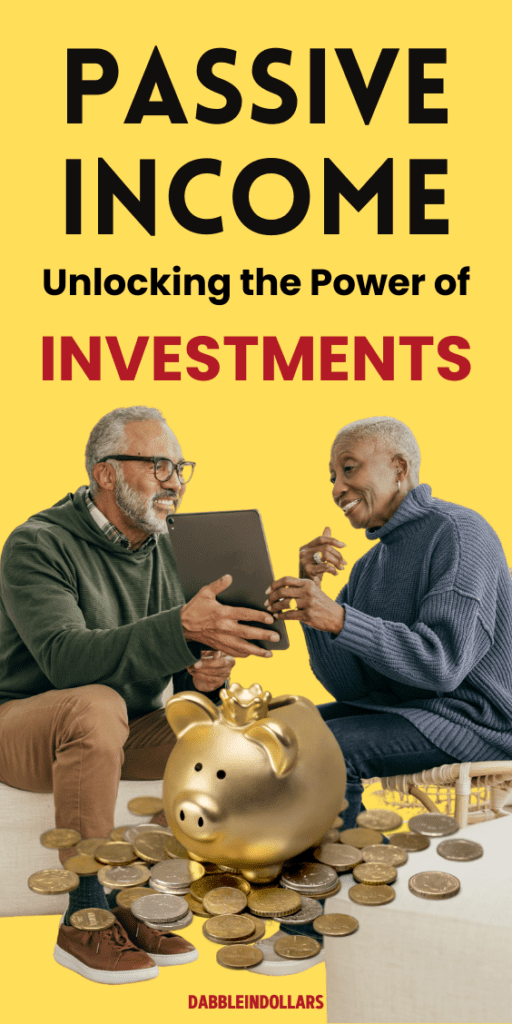

Passive Income: Unlocking the Power of Investments
Investing your money can be a powerful way to generate passive income. One strategy is to invest in the stock market, which has historically delivered strong returns. By investing an initial $10,000 and adding $7,100 per year, with an average annual stock market return of 7%, you could grow your investment to $100,000 in just 8 years. The beauty of passive investing is the potential for higher returns, though it also comes with risk.
Another option is to explore real estate investments, such as rental properties or Real Estate Investment Trusts (REITs). Rental properties can provide returns ranging from 5.4% to 7.0% or more, with a minimum investment of $100. REITs, on the other hand, have an average default rate of 7% to 12.42% and average fees of around 1%. These passive investing strategies offer the potential for steady income streams, but they also require research and diligence to manage the associated risks.
Investing in Your Income Potential

Elevating your income growth can be a game-changer when it comes to building wealth. One savvy strategy is to invest in yourself by developing new skills and education. According to financial expert Singh, this approach can yield returns ranging from 20% to a remarkable 500%.
The key is to identify ways you can allocate funds to learn abilities that will directly boost your earning potential over time. Whether it’s mastering a in-demand programming language, obtaining a professional certification, or pursuing a degree, investing in your income potential can unlock exponential growth opportunities.
Rather than simply saving or investing, consider the return on investment (ROI) you can generate by sharpening your skills. This strategic education investment can lead to substantial income growth and set you on a path of long-term financial prosperity.
Acquiring an Active Asset: A Hands-On Approach
Beyond passive investments, *active investing* can also be a powerful strategy to grow your $10,000 into $100,000. One approach is to invest in a small business, where you take a hands-on role in driving *profit growth* and *equity appreciation*. This type of *active investing* requires more time and effort, but it can also offer greater potential returns.
For example, you could use your $10,000 to purchase a $100,000 business with a 30% profit margin. If you can increase the business’s profits from $30,000 to $60,000, not only will you have more capital to save or reinvest, but the value of your *equity* in the business will also rise significantly.
Of course, *small business ownership* comes with its own set of risks and responsibilities. You’ll need to be prepared to actively manage the day-to-day operations, make strategic decisions, and navigate the challenges of running a business. But for those willing to take on the extra effort, the potential rewards can be substantial.
How to Invest $100 and turn it into $10k
Turning a modest $100 investment into a sizable $10,000 may seem like a lofty goal, but with the right investment strategies and a bit of patience, it’s an achievable target. The key is to approach this small capital investing opportunity with a well-thought-out plan and a focus on wealth building.
One effective way to turn your $100 into $10,000 is to explore the world of passive income through investments. Consider platforms like Flippa, which features over 400,000 weekly active buyers, 15 in-house brokers, and 120 broker partners, allowing you to potentially purchase an existing online business or website and let it generate returns for you. Alternatively, real estate crowdfunding platforms like Fundrise enable you to collectively invest in real estate, benefiting from the appreciation of properties.
Another promising investment strategy is to allocate your initial $100 towards low-cost index funds, which have traditionally offered average returns of around 10.26%. Top-performing options include the Vanguard 500 Index Fund (VFIAX), Schwab S&P 500 Index Fund (SWPPX), and Fidelity 500 Index (FXAIX), all of which boast extremely low expense ratios.
Remember, building wealth through small capital investing requires patience, discipline, and a willingness to explore various growth potential opportunities. By combining savvy investment strategies with a long-term mindset, you can transform your initial $100 into a remarkable $10,000 over time.
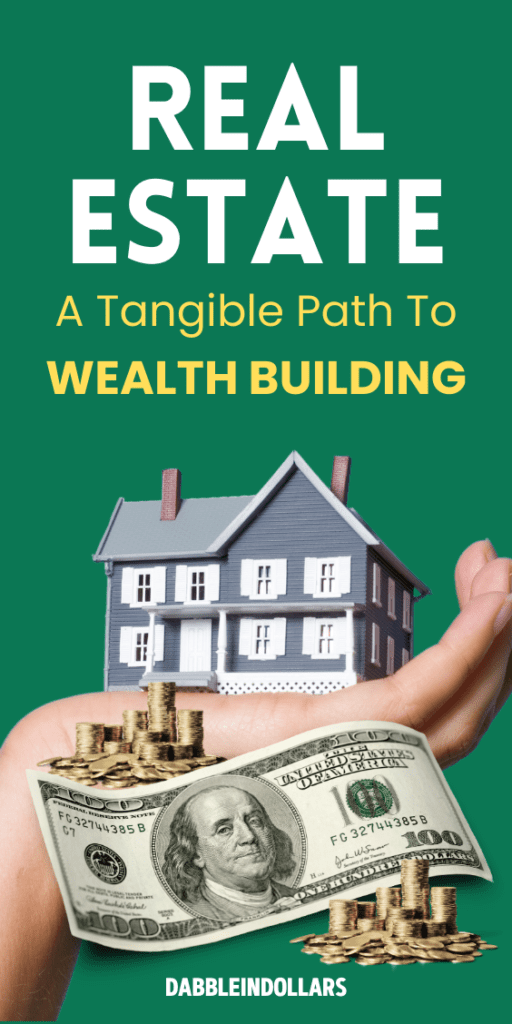
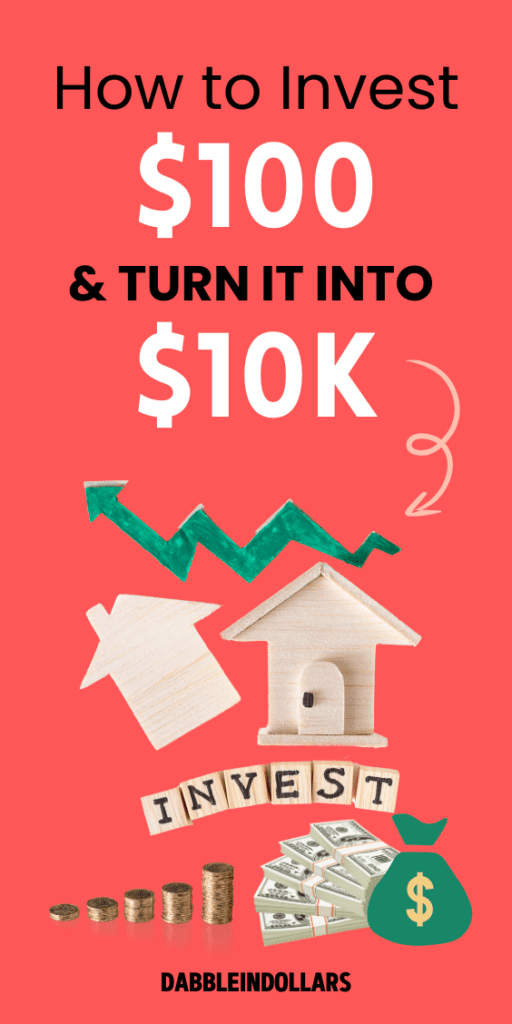
Real Estate: A Tangible Path to Wealth Building
When it comes to growing your $10,000 into $100,000, real estate investing can be a powerful strategy. While most traditional properties may be out of reach at this budget level, there are innovative options to consider.
One avenue to explore is real estate crowdfunding. These platforms allow investors to pool their funds to purchase properties, providing a lower-risk entry point into the real estate investing market. This can be an attractive option for those looking to dip their toes into rental properties without the full responsibility of managing a property themselves.
Alternatively, REITs (Real Estate Investment Trusts) offer another way to gain exposure to the real estate market with your $10,000 investment. REITs are publicly traded companies that own and operate income-producing real estate, distributing a significant portion of their taxable income as dividends to shareholders.

Whether you choose crowdfunding, REITs, or a combination of strategies, real estate can be a tangible path to building wealth over time. The potential for capital appreciation, rental income, and tax benefits make it a compelling option to consider as part of a diversified investment portfolio.
Crypto Craze: Is It Worth the Risk?
The cryptocurrency market, led by the iconic Bitcoin, has captured the attention of investors around the world. Cryptocurrency investment offers the potential for substantial gains, but it also comes with significant volatility and risk. Bitcoin, for instance, has experienced wild price fluctuations, reaching record highs of around $68,000 before trading down to its current value of approximately $30,000.
While the Bitcoin story has inspired many to explore the crypto frontier, experts caution that this market is not for the faint of heart. The volatility inherent in cryptocurrencies can make them a high-risk, high-reward proposition, suitable primarily for investors with a strong appetite for risk vs. reward. Nonetheless, the lure of potentially life-changing gains has led many to dip their toes into the crypto craze.
For those considering cryptocurrency investment, it’s essential to approach this market with caution and a well-informed strategy. Diversification, thorough research, and a long-term outlook can help mitigate the risks associated with this volatile asset class. As with any investment, it’s crucial to carefully weigh the potential rewards against the inherent risk vs. reward before committing capital to the crypto craze.

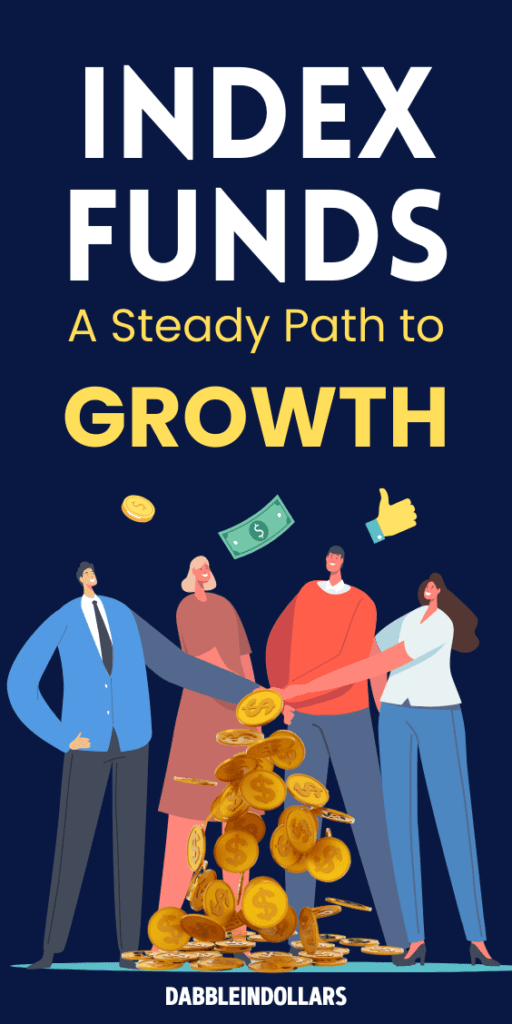
Index Funds: A Steady Path to Growth
Investing in index funds that track the performance of the broader market, such as the S&P 500, can be a more steady and lower-risk way to grow your $10,000 investment. These funds have historically delivered average returns of around 10.26%. Online brokerages like Vanguard, Schwab, and Fidelity offer a range of index fund options that can be a good fit for investors looking for a hands-off, diversified approach to growing their money.
Index funds provide instant diversification by investing in a basket of securities that mirror a particular market index. This helps mitigate the risks associated with individual stock picking. Furthermore, index funds typically have lower expenses and fees compared to actively managed funds, allowing more of your investment to work for you over the long term.
When it comes to index fund investing, patience and a long-term mindset are key. While the market may experience volatility in the short term, index funds have a proven track record of delivering consistent growth over time. By steadily contributing to your index fund portfolio, you can harness the power of compound interest to achieve your financial goals.
Mutual Funds: Diversifying Your Portfolio

When it comes to growing your $10,000 investment, mutual fund investing can be a smart strategy. These professionally managed funds allow you to invest in a diversified portfolio of bonds, stocks, money market instruments, and other securities. While mutual funds may not offer the same high-growth potential as some other investment options, they provide a more stable and diversified approach to building wealth over time.
Mutual funds come in various types, including bond funds, stock funds, and money market funds. Bond funds focus on fixed-income securities like government and corporate bonds, while stock funds invest in a range of equities. Money market funds, on the other hand, hold short-term, low-risk debt instruments. By investing in a mix of these fund types, you can achieve a well-rounded portfolio diversification that helps mitigate risk and potentially generate consistent returns.
One of the key advantages of mutual fund investing is the access to professional management. Fund managers research, select, and monitor the securities within the portfolio, allowing you to benefit from their expertise without the need for extensive investment knowledge. This can be especially appealing for those new to mutual fund investing or seeking a hands-off approach to growing their wealth.
Exchange-Traded Funds (ETFs): A Liquid Alternative
For investors looking to grow their $10,000 with a liquid and low-cost option, ETF investing can be an attractive choice. Exchange-traded funds (ETFs) are similar to mutual funds, but they trade on stock exchanges like individual stocks. ETFs provide the benefits of portfolio diversification and professional management, but with the added advantage of low fees and the ability to trade them throughout the day.
As of 2023, there were 2,934 ETFs in the US alone, showing an almost 50% increase over five years. ETFs generally have low expense ratios, typically a small fraction of 1%, making them less expensive than mutual funds. Additionally, ETFs do not charge load fees, unlike mutual funds which can charge sales or redemption fees ranging from 1% to 3%.
Some brokers, such as Ally Invest, allow investors to purchase $100, $1,000, or $10,000 worth of a specific ETF for as little as $0 in commission-free trading. ETFs can cover various market segments, including broad markets like the S&P 500, sectors, emerging markets, and even exotic asset classes, providing investors with diverse portfolio diversification options.
Dividend Stocks: Earning Passive Income
If you’re looking to generate passive income and grow your $10,000 investment, dividend stocks could be a smart choice. These are stocks offered by established, profitable companies that reward their investors with a portion of their profits. While there is still some risk involved, dividend stocks are generally considered a lower-risk investment option compared to more volatile stocks or speculative assets.
Dividend stocks can provide a steady stream of income, even as your initial investment grows over time. Many high-profile companies, such as those in the consumer staples, utilities, and healthcare sectors, are known for their reliable dividend payments. By carefully selecting a portfolio of dividend stocks, you can build a diversified, low-risk investments that can generate passive income for years to come.
One of the key benefits of dividend stocks is that they can provide a source of income even in down markets. While the stock price may fluctuate, the dividends themselves can offer a steady return, helping to offset any short-term volatility. This makes dividend stocks an attractive option for investors who are looking to build wealth and secure their financial future.

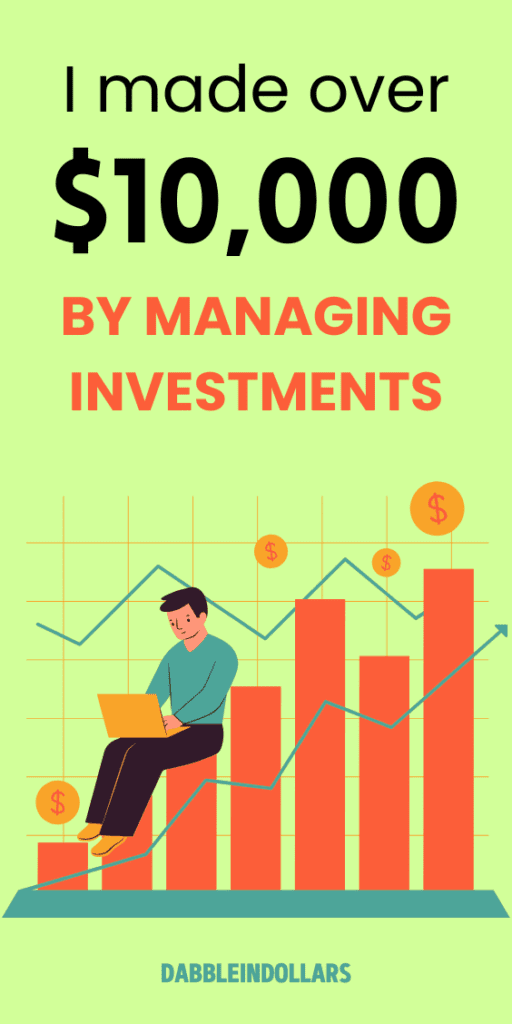
Peer-to-Peer Lending: A Higher-Risk Strategy
In the quest to grow your $100 investment into $10,000, peer-to-peer (P2P) lending can be a compelling option. This strategy involves directly lending your personal funds to individuals, with the potential to earn higher returns than traditional savings accounts. However, it’s essential to understand that P2P lending also carries greater risk, as the returns are largely dependent on the creditworthiness of the borrowers.
When considering P2P lending, investors must carefully evaluate the credit profiles of the borrowers. This involves assessing factors like credit scores, payment histories, and overall risk profiles. By diversifying your P2P loans across multiple borrowers, you can help mitigate the risk of individual defaults, but there is still a possibility of losing a portion of your $10,000 investment.
The average annual returns for P2P lending platforms typically range around 5-8%, which can be higher than the minimal interest offered by traditional savings accounts. However, it’s crucial to weigh the potential rewards against the increased risk associated with this strategy. Investors must be prepared to closely monitor their P2P loans and be willing to potentially accept a level of risk that may not be present in more traditional investment options.
Ultimately, P2P lending can be a viable option for investors seeking to grow their $100 into $10,000, but it requires a careful and diligent approach. By understanding the risks and potential returns, investors can make an informed decision on whether this higher-risk strategy aligns with their financial goals and risk tolerance.
Cryptocurrencies: The Volatile Frontier
Investing in cryptocurrencies, such as Bitcoin, is a high-risk, high-reward strategy that some investors may choose to explore. Bitcoin has experienced significant price fluctuations, reaching record highs of $68,000 before experiencing subsequent volatility. While the potential for large gains exists, the volatility of the crypto market makes it a risky investment that may not be suitable for all investors, especially those with a low-risk tolerance.
The cryptocurrency market capitalization reached $2 trillion in April 2021, indicating significant growth and acceptance in the digital assets space. However, Bitcoin’s value plummeted by over 30% in May 2021 due to regulatory concerns in China, showcasing the high volatility and risk associated with cryptocurrencies. With thousands of cryptocurrencies available, each with unique purposes and underlying technologies, traders must understand the diverse range of digital assets to navigate this volatile frontier.
Flipping Products: A Hands-On Approach
One strategy for growing a $10,000 investment is product flipping, also known as reselling products. This involves sourcing items at discounted prices, then reselling them for a profit on online marketplaces like eBay or Amazon. While there is some risk involved in finding buyers willing to pay your asking price, the relatively low initial investment and potential for quick turnaround can make product flipping an attractive option for some investors.
The key to successful product flipping is understanding the profit margins and demand for specific items. By scouring online marketplaces for deals and identifying trending products, you can capitalize on the difference between your acquisition cost and the selling price. This hands-on approach requires research, negotiation skills, and a keen eye for recognizing valuable merchandise.

One of the benefits of product flipping is the ability to scale your operations gradually. As you become more experienced, you can expand your product range, negotiate better wholesale prices, and streamline your logistics. This allows you to maximize your profit margins and potentially grow your initial $10,000 investment into a much larger sum over time.
However, product flipping is not without its challenges. Keeping up with market trends, managing inventory, and ensuring timely shipping can be time-consuming and require a significant commitment. Nonetheless, for those willing to put in the effort, product flipping can be a rewarding path to building wealth from a relatively modest starting point.
Website Flipping: Leveraging Online Assets
In the dynamic world of online business, website flipping has emerged as a savvy strategy for investors seeking to unlock the value of digital assets. This process involves acquiring an existing, profitable website and then optimizing its functionality, design, and search engine optimization (SEO) to increase its worth and command a higher resale price.
Platforms like Flippa have made it easier than ever for investors to identify and acquire established websites that are already generating revenue. By leveraging these online assets, savvy investors can grow a $10,000 investment through passive income and equity appreciation.
The key to successful website flipping lies in identifying undervalued websites with strong growth potential. Through careful analysis, investors can pinpoint sites with a solid revenue stream, loyal user base, and room for improvement. By implementing strategic enhancements, they can then sell the website at a higher price, generating a profitable return on their initial investment.
For those looking to explore the world of website flipping and online business acquisition, the potential for passive income and wealth growth is substantial. By leveraging the power of the internet and capitalizing on the rising demand for digital assets, investors can turn a modest $10,000 investment into a significant financial opportunity.
Debt Elimination: A Solid Foundation
While not an investment strategy per se, eliminating debt can be a crucial first step in building wealth and financial security. By using a $10,000 investment to pay off high-interest debt, such as credit cards or student loans, you can free up funds that would otherwise be consumed by interest payments. This can provide a strong foundation for future investment and wealth-building efforts, as you’ll have more disposable income to allocate towards growing your assets.
Paying off debt is often overlooked, but it can have a significant impact on your overall financial well-being. By prioritizing debt elimination, you’re not only reducing the amount you owe, but you’re also freeing up cash flow that can be redirected towards more productive financial goals, such as saving, investing, or building an emergency fund. This strategic approach to debt payoff can pave the way for greater financial security and long-term wealth building.
Once you’ve established a solid foundation by eliminating high-interest debt, you can then focus on allocating your resources towards more growth-oriented investments, such as index funds, real estate, or even cryptocurrencies. This balanced approach, combining debt payoff and strategic investing, can help you achieve a stronger financial footing and set you on a path towards sustainable debt payoff and lasting prosperity.




